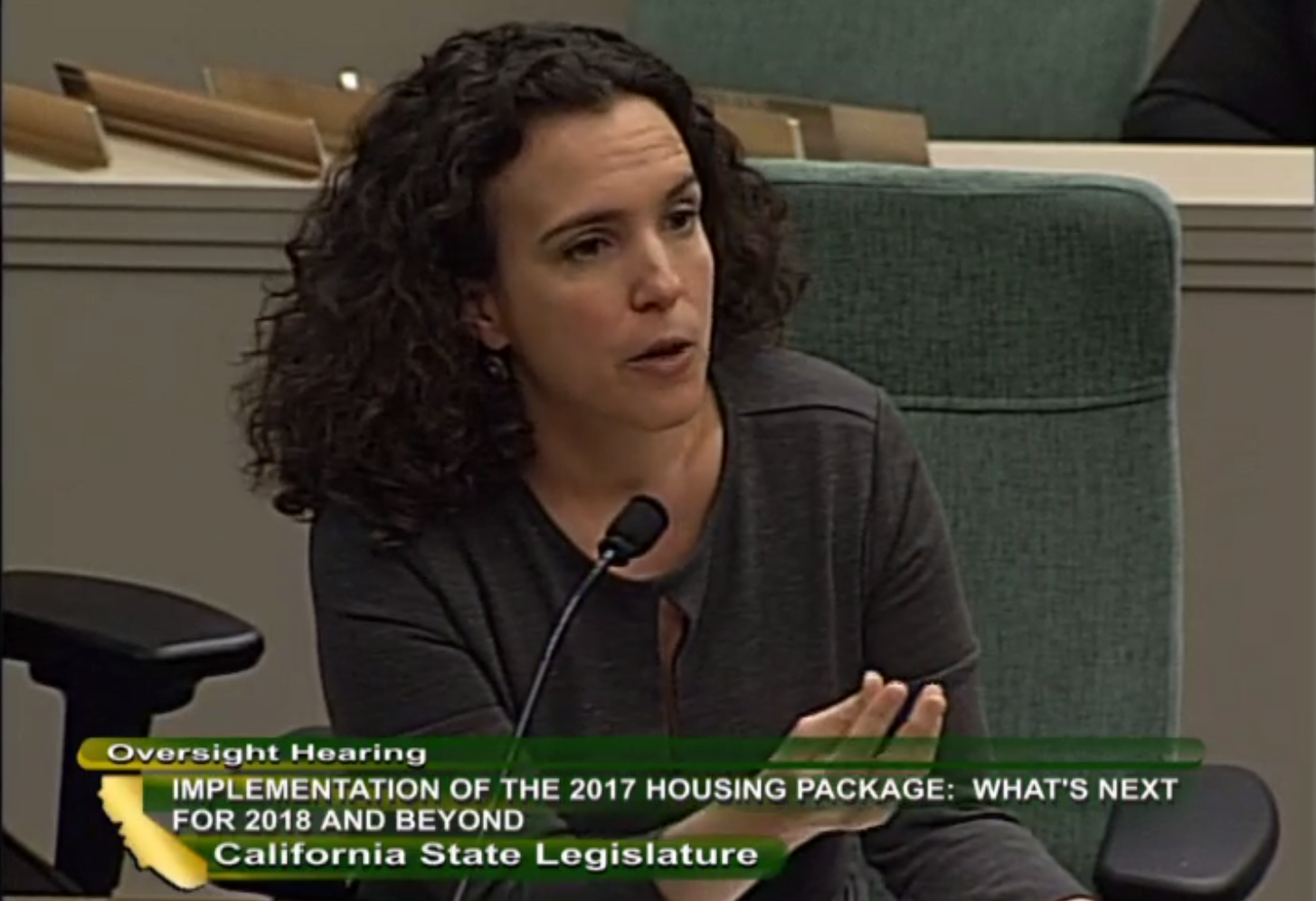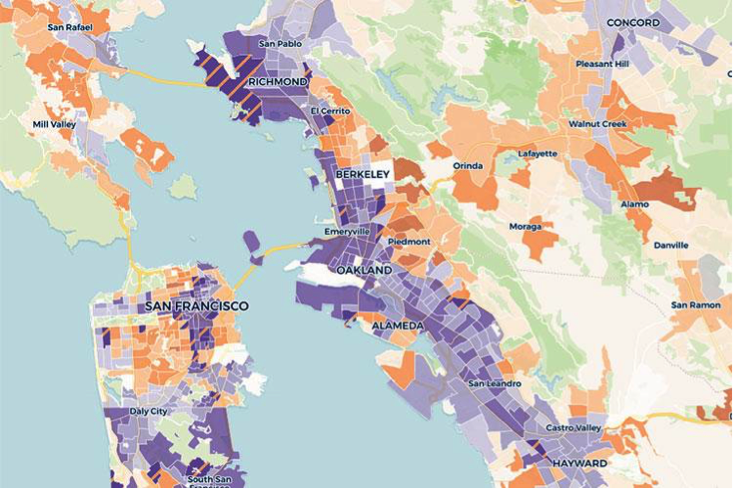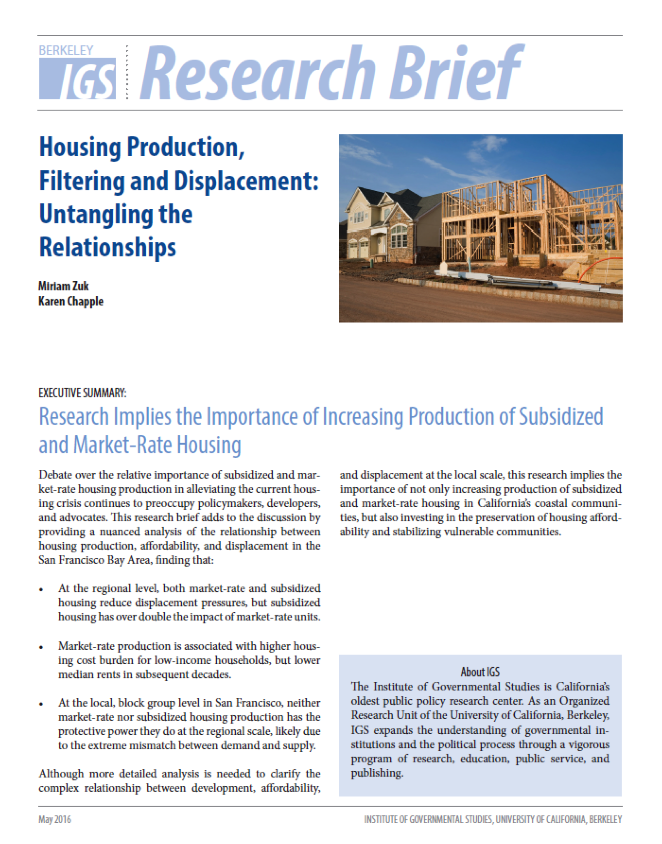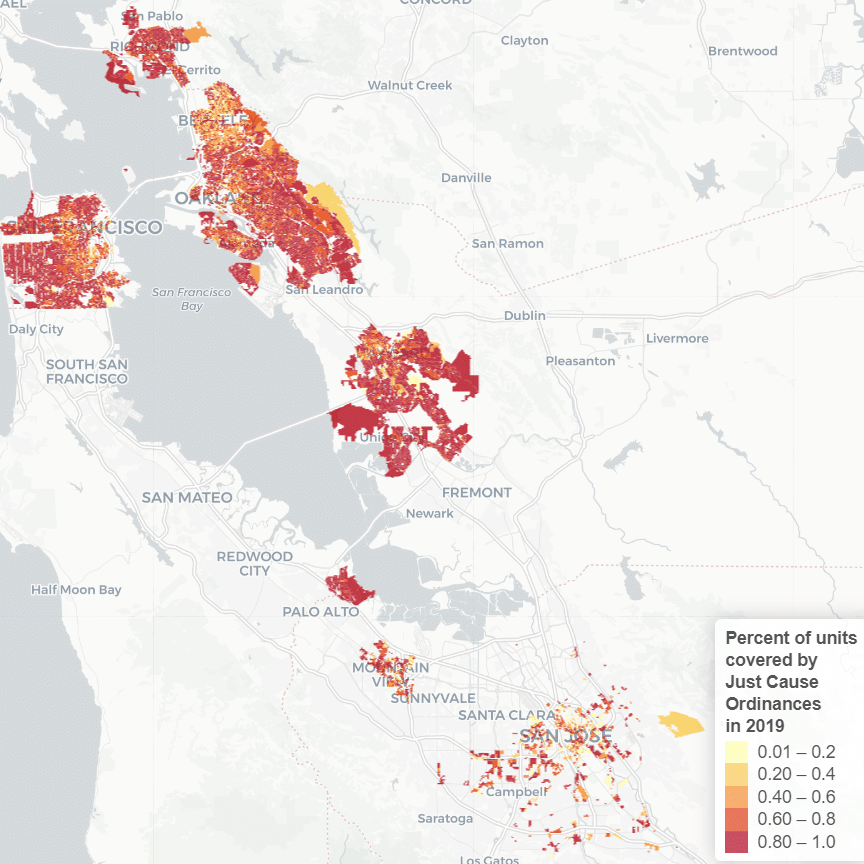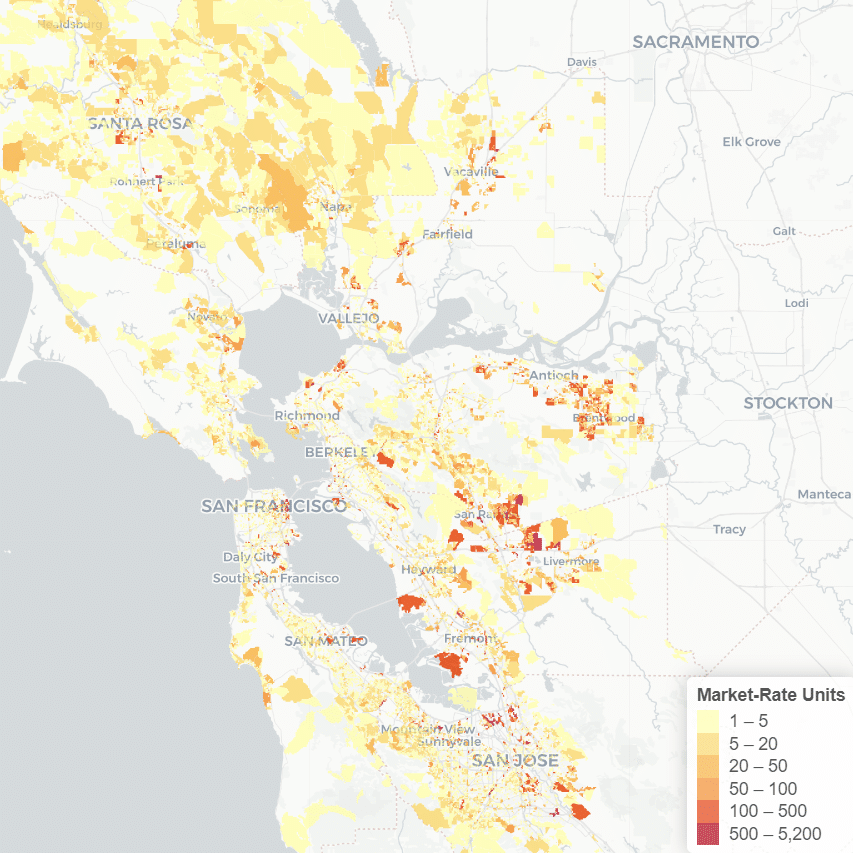2017 saw impressive progress for facilitating housing production in the state. What can we do in 2018 to protect tenants and ensure equitable development today?
Center for Community Innovation and Urban Displacement Project Director Miriam Zuk testified on Wednesday, February 21, 2018 before the Joint Senate Transportation and Housing, and Assembly Housing and Community Development Committee.
Dr. Zuk’s testimony focused on the need to address displacement in 2018 legislation.
Displacement is a crisis
Why is it urgent to address displacement in California? Because we are in a statewide crisis, as demonstrated by our research and other findings:
- Rents are out of reach for low wage workers: housing is severely unaffordable, especially for our state’s low wage workers. Drawing from the National Low Income Housing Coalition’s 2017 “Out of Reach” report, for a two-worker family making the California minimum wage, both parents would need to work over 11 hours a day to afford the average rent for a 2-bedroom apartment in the state.
- Low-income households are most rent burdened: according to a report from California’s Housing and Community Development agency, the lowest income households in the state are the most severely rent-burdened. This is contributing to our state’s high poverty rates; according to the California Housing Partnership Corporation, when you take housing costs into consideration, California’s poverty rate jumps from 16% to 21%.
- These pressures are leading families to leave the state: LAO research from last week showed that, from 2007 to 2016, on net, California lost 1 million residents to out-migration. It gained people with higher incomes ($110,000 per year or more) and higher levels of education (graduate degrees), and saw families with kids and those with only a high school education move out of the state.
- These phenomena are especially pronounced in the Bay Area, which leads the nation for outward migration. According to Redfin, in 2015, 1 in 4 people searching on their platform from the Bay Area for homes were looking for homes in other parts of the country. And who is moving? Urban Habitat research shows that between 2000-2014, the Bay Area lost 22,000 Black residents.
- Displacement risk is geographically widespread: our maps of gentrification and displacement show that 62% of low-income households across the Bay Area megaregion live inneighborhoods at risk of, or undergoing, displacement.
- Displacement is contributing to the homeless crisis: our research on the impacts of evictions in San Mateo County show the connection between displacement and homelessness. In our surveys, we found that a third of displaced households reported some period of homelessness or marginal housing following their displacement.
New supply is crucial, but not the full solution
- The 2017 housing package represents important progress toward addressing the housing shortage: The 2017 housing package contains several critical laws, including new funding for affordable housing, measures for preservation of existing subsidized housing, pathways to streamline the development process, and increased accountability for jurisdictions to build their fair share of housing.
- While we need more housing at all levels, we have to acknowledge that building more market-rate housing may not immediately improve affordability for low-income tenants: in our research on the effects of housing production on displacement and housing burden, we found that new market-rate production actually led to higher rates of housing burden for low-income tenants. And that is even when median rents went down – meaning we need to be paying specific attention to rents at all ends of the spectrum and not just the middle.
- Yes, and. Yes, we need to produce more market-rate housing, but we also need to contemplate and address displacement in how that housing gets built. Some ideas:
- Link production + protections: Production happens in profitable places, meaning in places where rents are projected to rise. Let’s make sure tenants are protected from rising rents and are able to stay in these neighborhoods while new housing is being produced. For example, tiered density bonuses could be provided based on whether or not a jurisdiction has tenant protections in place.
- Require affordability without hindering development: Inclusionary housing has come a long way and new tools are available to help jurisdictions determine where developers can make the addition of below market rate units still pencil.
- Ensure that there is no net loss of affordable units in the vicinity of new development: Take language from AB 2222 or Los Angeles’ Measure JJJ to ensure that more affordable units are being built than lost and guarantee existing tenants have the right to return if their units are redeveloped.
- Facilitate inclusive and diverse communities via fair housing and attention to local context/history: As we’ve learned through countless studies, such as Richard Rothstein’s Color of Law, our segregated and unequal neighborhoods took decades and tremendous intention to manufacture, and will therefore require similar effort to deconstruct. There is no one-size-fits-all fix to our housing crisis and we need to make sure our next housing boom is guided by principles of inclusivity and integration.
Intervene to protect tenants today
Beyond contemplating displacement risk in new production, we also need to do a better job securing basic protections for tenants.
- Tenant protections are needed in California — right now they are the exception, not the rule: Only 4% of CA jurisdictions have Just Cause evictions protections, protections over the cause of evictions. This means that everywhere else, tenants living in 465 cities and unincorporated areas of our 58 counties can be evicted from their homes for no reason at all. And only 12 cities have some form of rent stabilization, so in the other 470 cities and 58 counties, landlords can raise the rent by any amount at any frequency that they want.
- There are lots of ways to strengthen tenant protections, and legislation has already been proposed to this effect:
- To protect tenants from unfair evictions, we need expanded and stronger Just Cause Evictions protections. Assemblymember Bonta proposed a spot bill for statewide Just Cause Evictions legislation, AB 2925.
- To address the challenge of rent hikes, rent stabilization could be expanded to more places. Advocates are proposing a repeal of Costa-Hawkins, the statewide law that limits the reach of cities’ rent stabilization policies.
- In the absence of solid rent stabilization policies, and to address economic instability, AB 2219 requires that landlords accept third party payments; one-time emergency rental assistance is a key anti-displacement strategy in some counties, yet some landlords currently refuse to accept it.
- Tenants need better access to legal services. The recently proposed AB 2343, co-sponsored by Assemblymember Chiu, the Western Center on Law and Poverty, and the California Rural Legal Assistance Foundation aims to establish more reasonable evictions protocols. California has some of the shortest notice periods in the US, which are subject to abuse. Right now, tenants have to file within five calendar days of receiving a notice to summons; with notices often served at the end of the week, this doesn’t give them much time to find legal assistance. The bill also moves to strengthen anti-retaliation provisions. In general, right to legal counsel for low-income tenants would be a sensible way to ensure more just outcomes – a step New York City recently took.
- We need to improve substandard housing so that tenants live in healthy environments and are not forced to move due to deferred maintenance or landlord retaliation when they complain. One approach is to shift municipal code enforcement programs to focus on landlords making repairs, not displacing tenants.
- Finally, to preserve affordability in the existing unsubsidized housing market, we need diverse strategies such as taking units off the market through the kinds of acquisition and rehab programs popping up in the Bay Area (see San Francisco’s Small Sites program), or expanding voucher programs and requiring landlords to accept them.
The time is now
Displacement is real, is widespread, and is showing up across California, shaping the future makeup of our state. While the 2017 housing package took steps in the right direction to address the housing shortage, it does not do enough to mitigate the displacement crisis today. Tenants need more explicit protections from displacement. Advocates and decision makers are hard at work on shaping these bills, and the legislature needs to step up and pass them. California’s tenants can’t wait.
Download Dr. Zuk’s presentation here.
Watch Dr. Zuk’s presentation here.

